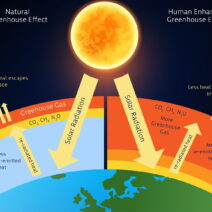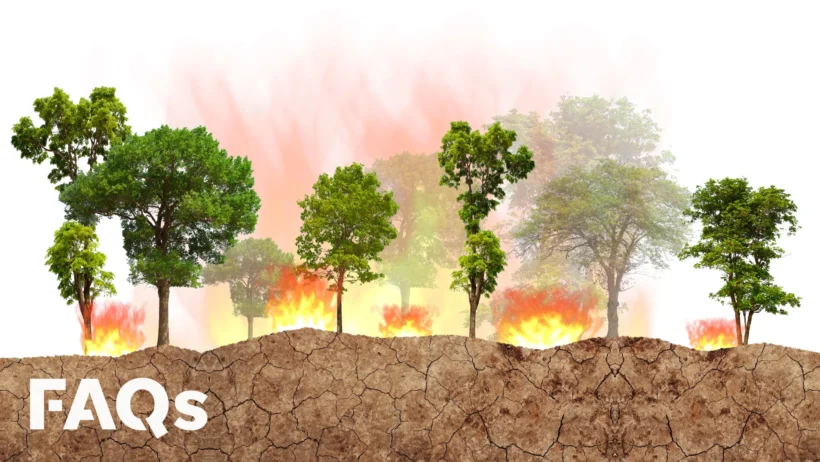Forest fires are often perceived as wild, uncontrollable forces of nature, yet they possess a paradoxical interaction with climate change, acting as both symptom and amplifier of the very problem they exacerbate. These fiery spectacles dance across the landscape, consuming everything in their path while simultaneously releasing vast quantities of carbon dioxide and other greenhouse gases stored in trees, soil, and vegetation. In essence, when we think about forest fires, we must grasp the staggering reality that each sparked flame unfurls a tale of environmental degradation and alteration in the atmospheric balance.
The link between forest fires and climate change is akin to a double-edged sword. As climate change intensifies, it creates conditions ripe for the ignition of wildfires. Higher temperatures, prolonged droughts, and shifting weather patterns contribute to an environment where forests are not just more susceptible to fires, but where these fires can grow larger and spread more rapidly. In this way, climate change does not merely prompt the occurrence of forest fires; it sets the stage for a cycle of destruction that fuels itself in an unyielding vortex.
When a forest fire ignites, it doesn’t just annihilate trees; it obliterates the carbon sinks that forests represent. Dense canopies of trees act as significant absorbers of carbon dioxide, sequestering carbon in both their biomass and the soil beneath them. Yet once reduced to ashes and charred remnants, this carbon is released back into the atmosphere in copious amounts. Statistics indicate that combustion during wildfires can emit nearly as much carbon as total emissions from the transportation sector in an entire year. This revelation casts forest fires not merely as localized disasters but as potent contributors to a global crisis.
In conjunction with this immense release of greenhouse gases, forest fires unleash secondary contaminants into the atmosphere, such as particulate matter and volatile organic compounds (VOCs). These byproducts serve as catalysts for a multitude of environmental issues, from diminished air quality to the exacerbation of respiratory diseases among populations both near and far. The smoke from forest fires doesn’t recognize geographical boundaries; it drifts across states and nations, creating a ripple effect of health hazards. Just as ripples expand outward in a pond, the repercussions of these fires lay claim to air quality for all who inhabit the region. This illustrates how interconnected our environmental systems truly are.
The theme of irony emerges vividly here. Forest fires, essential for the rejuvenation of certain ecosystems, hold the capacity to foster new growth. Some species, like the lodgepole pine, have developed a symbiotic relationship with fire, utilizing it as a mechanism for reproduction. The fire clears the underbrush, allowing seeds to germinate in nutrient-rich soil. However, this argument for the natural role of fire becomes convoluted in the anthropogenic era. As global temperatures soar, fires become more frequent and intense, overwhelming the natural resilience of forests and resulting in long-term transformations of landscapes. What was once a restorative cycle becomes a harbinger of irreversible change.
Moreover, the consequences of forest fires extend beyond immediate ecological destruction. The charred terrain suffers from soil erosion and a decreased capacity to retain water, leading to increased runoff that can exacerbate flooding downstream. The watershed is choked with debris, leading to sedimentation in waterways. This, in turn, impacts aquatic ecosystems, threatening the delicate harmony that sustains biodiversity. The repercussions of a single fire extend to entire watersheds, showcasing a domino effect that unfurls across multiple environments.
As the frequency and intensity of forest fires escalate, so do the socioeconomic ramifications. Communities situated in the path of wildfires face dislocation, loss of property, and potential threats to livelihoods. The economic toll can be exorbitant, with firefighting costs running into the billions each year. The default valuation of natural resources misrepresents their intrinsic worth, as scorched landscapes yield no monetary return; instead, they become reminders of what once was—a horrendous souvenir of nature’s fury and mankind’s mismanagement.
Responses to forest fires have evolved, yet awareness of their critical linkage to climate change remains insufficient. Mitigation strategies emphasize not only prevention and suppression of fires but also a comprehensive understanding of forest management. This may include controlled burns or the restoration of native vegetation to rebuild resilience in ecosystems that have been battered over decades of mismanagement. In fostering a proactive approach, we can collectively work towards a sustainable future where the relationship between fire and forestry is redefined, not as adversaries, but as components of an intricate ecological tapestry.
As we safeguard the future of our planet against the perils of climate change, we must not lose sight of the profundity of forest fires. Their flickering embers illuminate a truth about rapid environmental shifts caused not solely by natural phenomena, but by our activities as well. It is imperative that humankind acknowledges its role in this transformative narrative: both as caretakers of the forests and mitigators of climate change. The time has come to extinguish the fires of negligence and indifference, embracing stewardship that not only respects nature but also recognizes the urgency of addressing our role in the warming world.


